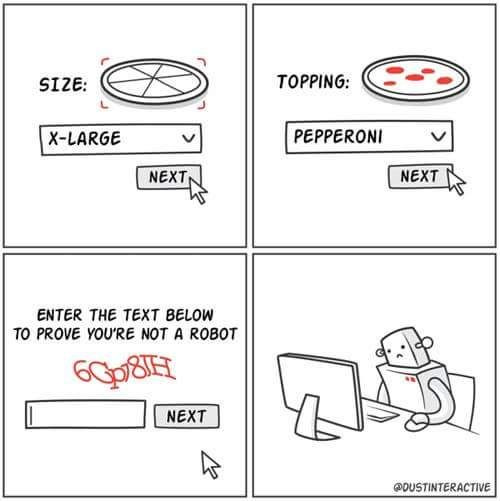Who needs calls when there are chats and bots?
 Companies have a good tradition: to talk about their "core" technologies. How they all need, develop and that without them nowhere. When two years ago I came to Voximplant to talk about call automation, I only knew what calls were about calls. Well, another scary word "PBX", which is usually some kind of tsiska in the corner.
Companies have a good tradition: to talk about their "core" technologies. How they all need, develop and that without them nowhere. When two years ago I came to Voximplant to talk about call automation, I only knew what calls were about calls. Well, another scary word "PBX", which is usually some kind of tsiska in the corner.Two years have passed, during which the messengers were about to kill the calls. Chat bots, big date, deep launching joined the messengers. Calls had no chance at all. But for some reason they did not die. From the word "absolutely." Millions of calls per month regularly doubled, the sales department did not get out of the meetings, and developers, who need to automate calls, constantly went to my Facebook, Skype and telegrams.
Why is that? I dont know. But there are a number of observations that I am interested to share with you and read the comments.
')
Man that sounds proud
If you look from the side of a person, the voice is simply more comfortable. You first hear in your development, then speak, then type the text (I suspect that the Millennials have almost the last two points in common). From your very childhood, centers are formed in the brain responsible for understanding speech and transforming it into a “meaning”.
With the advent of mobile devices, there is more and more text in communication, however, it is still convenient and simple to perceive voice messages and respond to them. Since in your personal space you talk all the time and this is not going anywhere (until brain implants appear for the exchange of thoughts).
Yes, few people like to communicate with strangers. Most of us, especially on Habré, are introverts. But if people are afraid of communication with other people, then no one is afraid of a voice robot and communication with it takes place on a completely different level than with a person. You understand that this is a machine and you do not need to "decipher" hidden meanings on a subconscious level (include those very centers of understanding) you are talking to the robot logically, not emotionally, and are ready to tell the truth. This is not just good, but opens up completely new horizons of interaction for companies - what the operator doesn’t say, the robot will say.

Voice communication is the path of least resistance. Text and bots (which are an add-on text), while applicable for simple tasks. Moreover, the bots are actively used by people who are immersed in the topic - the very millennials - because they know where to find a bot company, how to communicate with it and what can be obtained from it. It turns out that communication with a bot implies a certain level of knowledge and / or training. The voice, being correctly automated, allows anyone to quickly get what they need.
Imagine a standard user with a fallen off internet.
Option with bot or channel:
- It connects the mobile Internet, tries to find a provider provider in Telegram, tries to find a channel on Facebook, switches to a bot, formulates a problem, formulates it in simple words, spells out, throws and goes to call.
As he calls:
- Connects the mobile Internet, finds the provider number, calls, through voice automation receives information that his problem is already solved, will be ready in N hours, a discount for the next month, goes happy to walk.

The company - it sounds expensive
From the point of view of companies, the development of artificial intelligence and machine learning allows making voice interfaces one of the main means of communication with customers.
If earlier such voice work platforms were expensive and rare, the companies themselves were little automated from a software point of view, now technologies and their penetration make it possible to organize voice communication of the corporate cloud (by the cloud I mean the whole set of systems and services existing in the company) with by user.
Call you 20 years ago to the insurance company - maybe they would like to say that the payment documents are ready and can be taken at office A. That's when CRM was written on paper, the accounts were in the accounts, and it was 10 dollars to recognize the voice for the word of the Hindus in faraway Bangalore. It was cheaper and easier to plant a person who would unite in himself all the knowledge.
Automation of companies has already reached a critical mass and, along with voice recognition technologies, synthesis capabilities, machine learning, allows for seamless and seamless communication with customers.
Voice automation allows you to replace most of the operators and not only reduce the cost of the call center, but also improve the quality of interactions.
For example, Hoff, by introducing an audiobot, increased coverage from 60 to 80%, reduced the number of operators by almost 20 people and eventually saved about 7 million rubles. Details can be found in the recording of the report:

Voice as future
Audio robots allow companies to embed Big Data, Machine Learning and other scary techno-words into a well-established and comprehensible area of voice communication, which provides a radical improvement in service and cost reduction.
What does the introduction of voice interfaces:
- Improved response speed (automatic call 10 seconds after ordering)
- Automatic quick solution of similar problems (order status information, support request, etc.)
- Smart interviewing during a call
- Reduction of the human factor
- Post-service automation
- Automation of additional requests and additional sales
Voice interfaces not only remain an important way of interaction between customers and companies, but also are experiencing a new wave of development, which I will discuss later. After I spend the remaining spring-summer hackathons and speak at AmsterdamJS. Stay tuned!
Source: https://habr.com/ru/post/328616/
All Articles